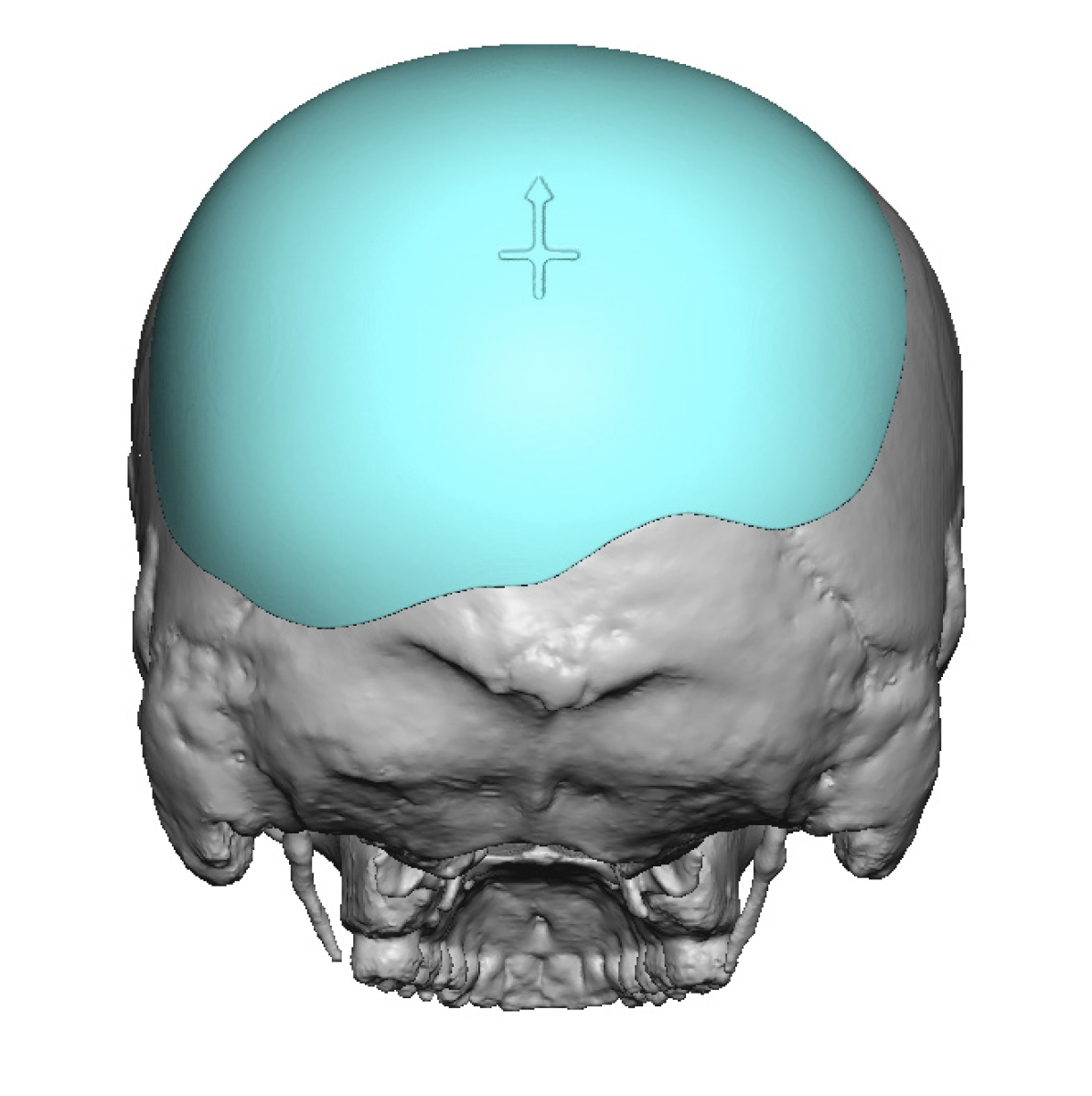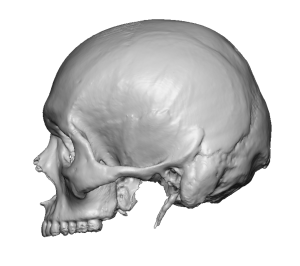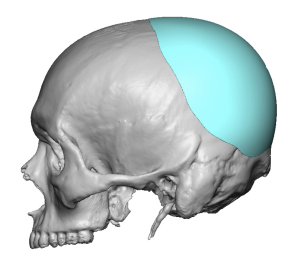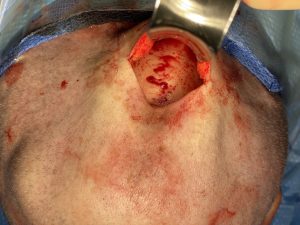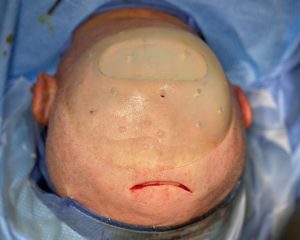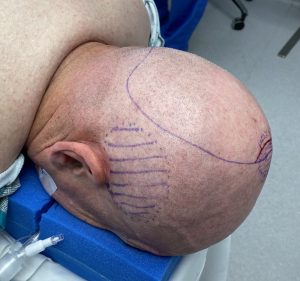Background: The flat back of the head is one of the most common aesthetic head shape deformities. There are multiple causes of a flat back of the head but the most common is deformational, meaning that external forces either in utero or after birth put pressure on the young thin forming skull bones causing that area where pressure had been applied. Because the skull forms as a combined unit of bones and the driving force is the internal developing brain, if one area of the skull does not reach its more rounded potential there will be surrounding skull areas that will develop surrounding misshapen areas.
In the flat back of the head the most common resulting effect is that the back sides of the head get wide. (biparietal/bitemporal widening) But other adverse effects could include a higher crown area (increased skull height), ear deformities and mastoid process asymmetries.
Thus when treating a flat back of the head it is important to look beyond just the pure parietal-occipital rounding augmentation and see if other shape abnormalities can also be treated.
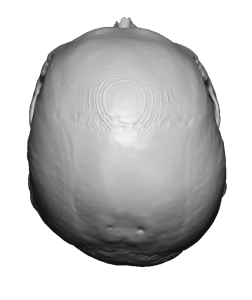
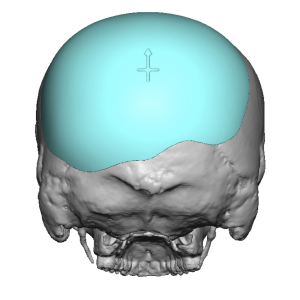
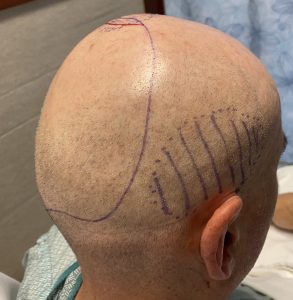

Lastly the right posterior temporal region was reduced by muscle removal. A drain was placed that connected the skull implant site and the temporal reduction and existed out behind the right ear incisi0on

The shaved head male is the most aware of the many nuances of their head shape for understandable visibility reasons. As a result they are often very cognizant of other more minor shape issues beyond the major one. But because of their shaved head they are also the most scar sensitive. So a balance has to be reached between how much reshaping can be done and the amount of scar that is created in doing it. In this case three skull problems could be treated from one more visible scar (the behind the ear scar does not count since it is never visible), which turns out to be a worthy scar tradeoff.
Case Highlights:
1) Flat and asymmetric back of the heads are successfully treated by a custom skull implant.
2) Associated anomalies of a flat back of the head can be treated at the same time as its augmentation such as sagittal crests and temporal widening.
3) One of the aesthetic keys to multiple areas skull reshaping is to limit the incisional/scar burden in doing so.
Dr. Barry Eppley
Indianapolis, Indiana

